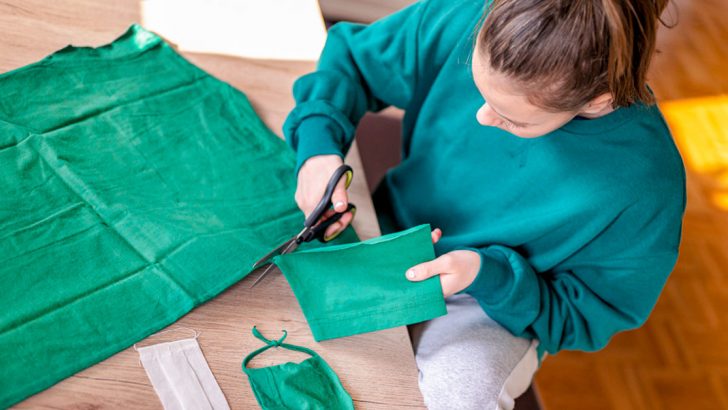Currently, the Government recommends wearing cloth masks – it does not require medical grade masks or respirators. The Government considers medical masks and respirators as vital supplies and are not intended for use by the public in the community. They want to try and make sure that medical face masks are kept for health care workers.
According to the HSE, the materials you will need are: a cotton t-shirt or some other cotton fabric; two 15cm (six inch) pieces of elastic; a needle and thread; and a scissors. How to make a cloth face covering at home is as follows:
– Cut two rectangles of tightly-woven cotton about 25cm x 15cm (10 x 6 inches).
– Stack the two rectangles; you will sew the covering as it were a single piece of fabric.
– Fold over the long sides 6mm (1/4 inch) and stitch.
– Fold and stitch the side edges, leaving a gap big enough to thread elastic through, about 12mm (1/2 inch).
– Thread two 15cm lengths of elastic through the side edges and tie tight. Hair ties or string, cut longer and tied behind the head, will also work. These will be the ear loops.
– Tuck the elastic knots inside the edges of the mask and stitch in place for a neater finish.
– Place the mask over you face to ensure it fits. Your mask is now ready to use.
– Ideally, there should be no gaps at the edges of the mask and it should cling tightly to your face. This ensures that no particles can sneak in the sides and maximises efficiency.
– You can have a bit of fun with the style of fabric you use, especially when making them for children. Whether it’s blue or yellow, with dinosaurs or polka dots will not affect how well it works, but it might make it easier for your child to accept. However, the Government’s current advice is that children under 13 do not need to wear a mask.
The HSE advises that you should throw out a cloth face covering when it:
– no longer covers the nose and mouth;
– has stretched out or damaged ties or straps;
– cannot stay on the face;
– has holes or tears in the fabric.


 1215372390
1215372390 